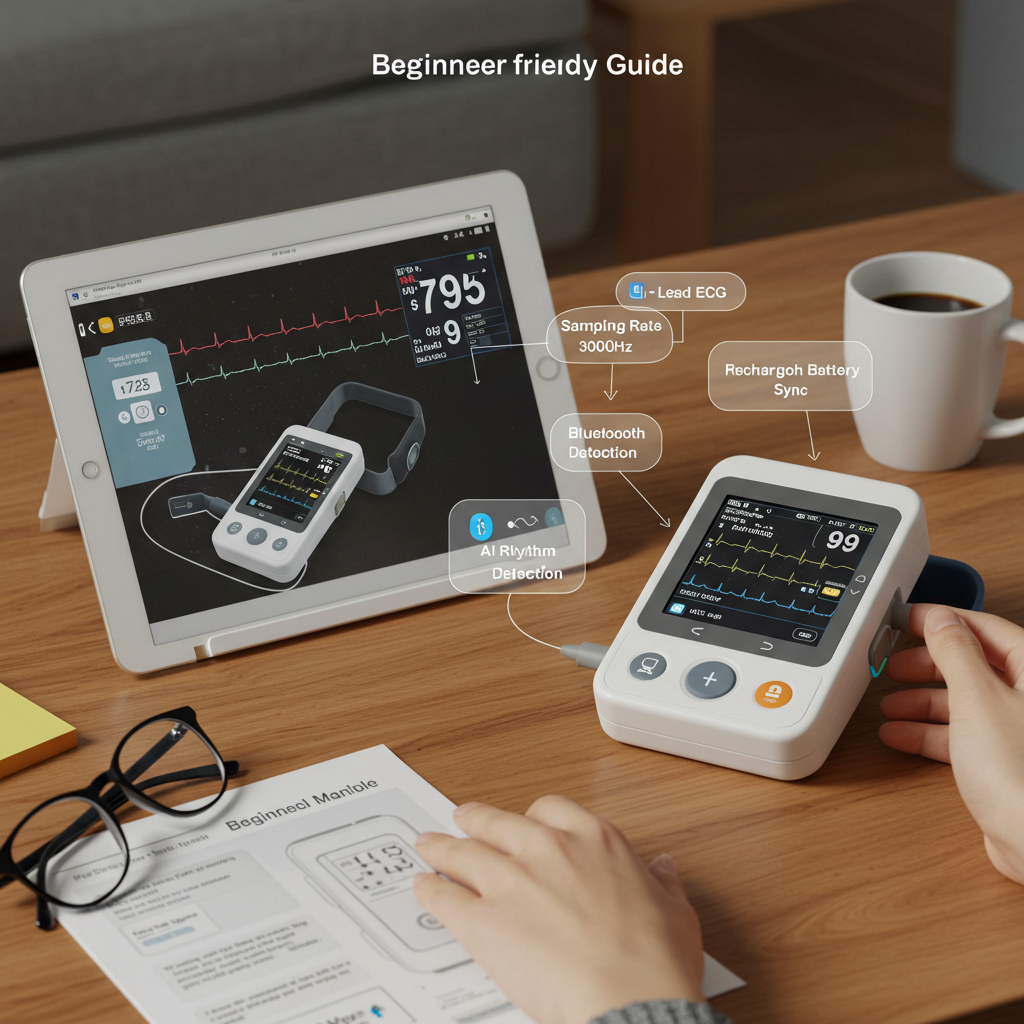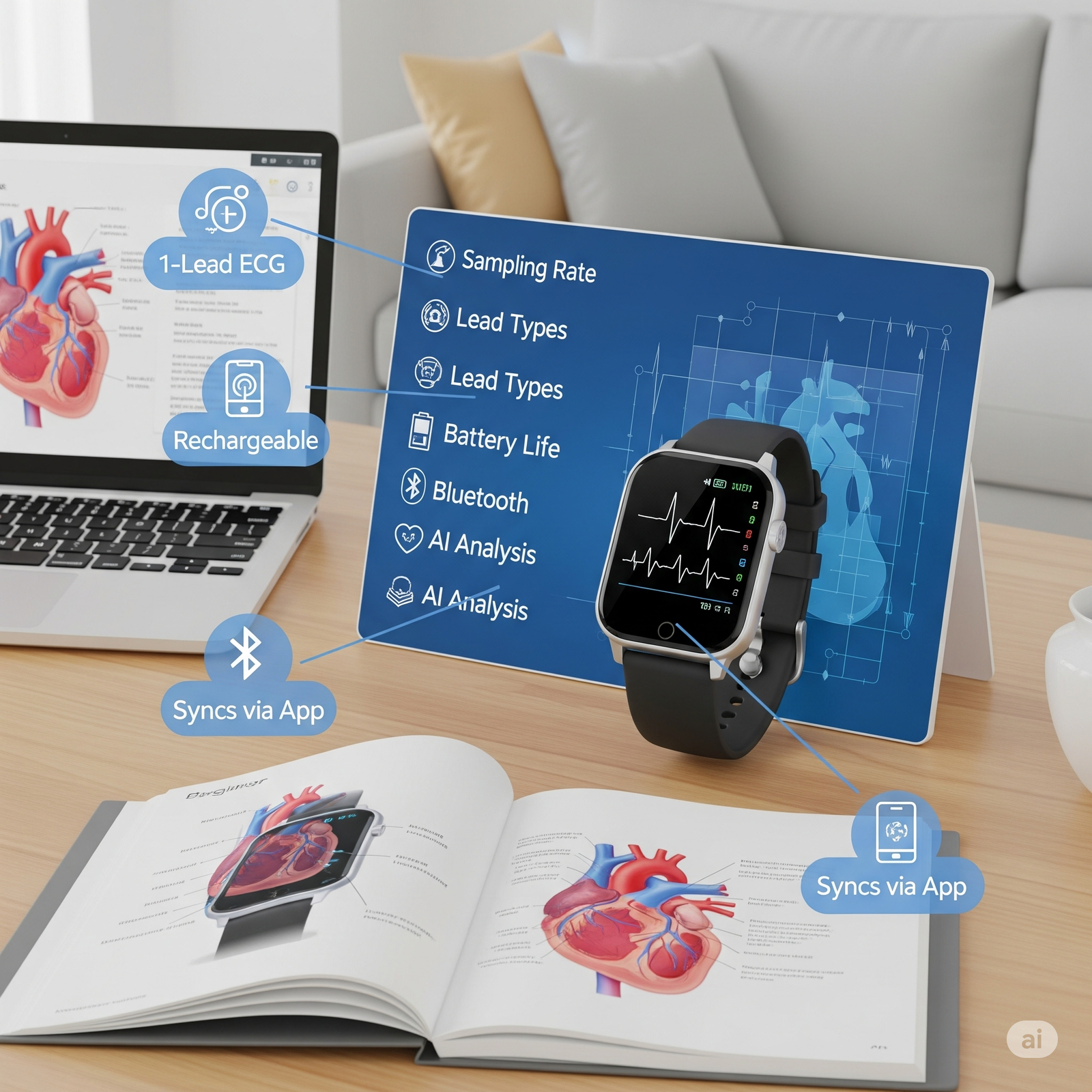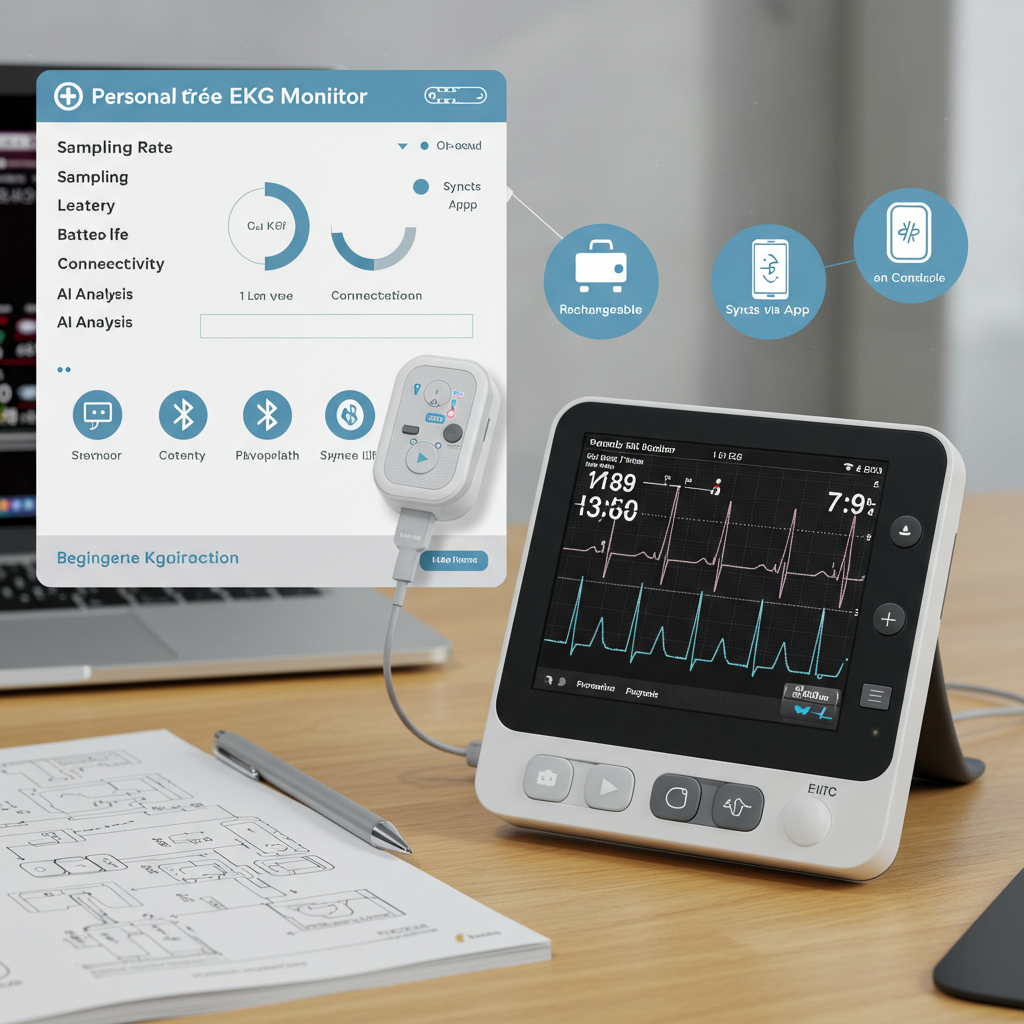Let’s be honest! Exploring heart health devices as a beginner can be quite tough at the beginning. Whether you’re monitoring your own heart or helping a loved one, understanding EKG monitor specifications is the first step toward making smart, confident choices. This guide explains everything in simple terms to help you stay proactive and stress-free.
What Is an EKG Monitor and Why Should You Care About the Specs?
Here’s the deal:
An EKG monitor (short for electrocardiogram monitor) records your heart’s electrical activity. It helps detect irregular beats, monitor heart function, and even prevent more serious issues.
So why do EKG monitor specifications matter? Because they tell you how reliable, accurate, and easy to use a device is.
Curious what those technical details really mean? Let’s unpack them.
Specs That Actually Matter: What to Look For in an EKG Monitor
Not every monitor works the same way. Here are the EKG monitor specifications that really count:
- Lead Type: The number of leads refers to how many points of contact the monitor uses to read your heart’s activity. A 1-lead device is simpler and ideal for basic checks, while 3-lead or 12-lead systems are more helpful for those managing ongoing cardiac issues.
- Sampling Speed: This tells you how often the monitor captures your heart signals. A higher speed (like 500 samples per second or more) means it’s catching even tiny irregularities, which can be critical for early detection.
- Screen Type & Size: You’ll want a monitor with a clear, easy-to-read screen. Look for bright OLED or LCD screens that make data visible even in daylight or low light.
- Size and Portability: Beginners benefit from lightweight and portable designs, especially if you plan to monitor your heart on the go. Wrist or chest strap models offer convenience without feeling bulky.
- Battery Life: The longer the battery lasts, the more you can rely on the monitor without constantly charging it. Some devices last days, others weeks—check for ones that fit your routine.
When comparing EKG monitor specifications, think about how often you’ll use the device and how detailed your heart readings need to be.

Let’s dive into how these features affect your monitor’s accuracy.
Accuracy Matters: How Monitor Specs Impact Your Readings
If your goal is peace of mind or spotting early signs of trouble, accuracy is everything. Here’s what matters most:
- High Sampling Speed: Captures more data, which gives your doctor a better picture of your heart rhythm.
- Multiple Leads: Offers a more complete reading of your heart, improving detection of arrhythmias and other conditions.
Devices like the Holter monitor or those that track heart rate and ECG typically offer more advanced specifications, which can be crucial for people with known heart conditions or post-surgery monitoring.
Now that you know why accuracy counts, let’s talk about ease of use.
Ease of Use: Because Simplicity is Key
If the device is too heavy, it might just sit in a drawer. The best monitors are simple in design. Look for EKG monitor specifications like:
- One-button Operation or Touchscreen: These make it easy to start a scan with minimal steps, perfect for users who don’t want to fumble with settings.
- Bluetooth or Wi-Fi to Send Data: This allows your readings to go straight to an app or cloud service, making it easier to share with your doctor.
- App Support for Easy Viewing: A friendly app interface shows graphs, summaries, and trends gradually. Beginners should look for apps with clear visuals and simple explanations.
- Minimal Setup and Cleaning: Monitors that are easy to clean and don’t require complex setup are much more convenient, especially if you’re using them daily.
Comfort matters too, especially for wearables. That’s where a wireless heart rate monitor or pulse reader can really shine. They’re easy to wear and use throughout the day.

So what happens after you take a reading? Let’s talk about screens and results.
Understanding the Display: What Are You Really Looking At?
Once you’ve taken a reading, the way the monitor displays your results can make or break the experience. Look for:
- Clear Graphs, Preferably in Color: Color-coded signals help you quickly identify if your heartbeat is normal or not. Graphs should be large and easy to read.
- Simple Messages or Symbols: A green check for “normal,” a red alert for “irregular”—these small cues make all the difference for beginners.
- Zoom and Scroll Functions: Want to explore your heart rate in more detail? These features allow you to zoom in on certain time periods to see fluctuations.
Top-tier EKG monitor specifications sometimes include real-time sharing with your doctor. Some models, like a pulse heart rate monitor, come with apps that make it easier to read your data and understand what it means.
Speaking of data—how do you keep track of it all? Let’s talk about storage.
Data Storage and Sharing: Keep Track Over Time
Heart rate tracking over time helps spot patterns and provides valuable insights. Look for monitors that offer:
- Built-in Memory: Devices should store at least a week’s worth of data for you to review.
- Cloud Backup or Syncing: This adds an extra layer of safety and ensures your data isn’t lost if you misplace the device.
- Export Options for Doctors: Sharing results with cardiologists should be as easy as sending a PDF or email.
Many advanced EKG monitor specifications include secure data sharing, so you can send updates to your healthcare provider from home.
Now, let’s talk about something we all rely on: battery life.
Battery Life: The Hero of a Good Monitor
Imagine needing to check your heart and the device won’t turn on. Frustrating, right? That’s why battery performance matters. Look for these EKG monitor specifications:
- Rechargeable Batteries: Easier on the wallet and better for the environment, they are great for frequent users.
- Long Usage Per Charge: Devices that last several days or even weeks without charging offer more freedom and peace of mind.
- Sleep or Auto-Off Modes: These conserve energy, extending battery life when the device isn’t in use.
If you’re using something like a heart beater machine or pulse rate machine throughout the day, battery life becomes even more important.
So how much should you spend? Let’s look at cost and value.
Is It Worth It? Weighing Cost Against Features
EKG monitors can range from under $100 to several hundred dollars. But the cost isn’t everything. You need to keep several other important factors in mind.
Imagine needing to check your heart and the device won’t turn on. Frustrating, right? That’s why battery performance matters. Look for these EKG monitor specifications:
- Build Quality and Durability: Sturdy devices are more reliable and less likely to malfunction.
- Customer Support: Make sure help is available if you run into trouble.
- Warranties and Software Updates: These show the brand stands behind its product and plans to keep it up-to-date.
Higher-end EKG monitors might cost more, but they can help you avoid unnecessary doctor visits or health scares.
Now, how do you choose the right one for your lifestyle? Let’s bring it all together.
Matching the Monitor to Your Lifestyle
Picking the right EKG monitor isn’t just about features—it’s about fit. Think about your day-to-day life:
- Active Users: If you’re always on the move, choose a wearable device like a wireless HR monitor that doesn’t interfere with exercise or errands.
- Managing a Condition: For those tracking existing issues, go for hospital-grade accuracy and robust data storage.
- New to Technology: Select models with voice instructions, big buttons, and simple interfaces that don’t require tech skills.
For simple, everyday tracking, tools like a heart beat monitor or pulse rate machine offer just the right balance of ease and reliability.
Finally, let’s talk about the big picture—your heart health.
Understanding EKG monitor specifications gives you the power to take control. With the right information, you can pick a device that fits your needs, supports your health, and gives you peace of mind. Whether you’re dealing with a cardiac issue or just want to stay ahead, the right monitor makes all the difference.
Don’t wait until something feels wrong. Explore EKG monitors that fit your lifestyle and needs. Your heart works hard for you. Make sure you’re giving it the care it deserves.


